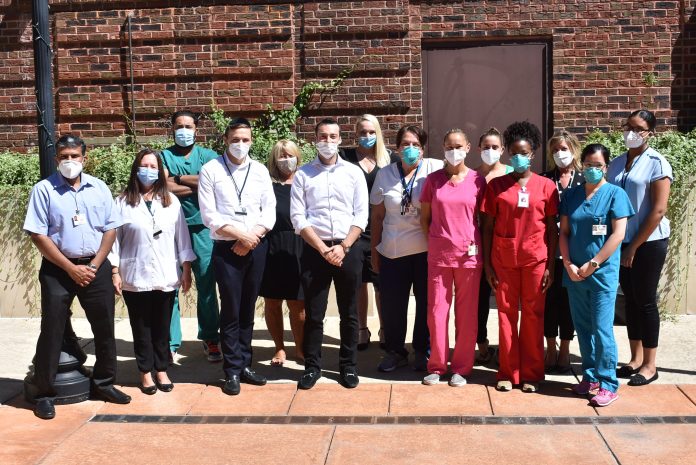Lisa Sofia remembers early March as the time the world turned on its side.
As president and CEO of Deer Meadows Retirement Community, 8301 Roosevelt Blvd., the prospect of a pandemic in which the elderly population was particularly vulnerable at first seemed terrifying. According to Sofia’s planner, the last day of normal operations at the center was March 4. After that, COVID-19 hit.
By March 14, they were screening staff and residents, wearing PPE and monitoring symptoms. The staff was used to taking precautions during flu season, but this was a far heightened response, Sofia said. When the virus first hit and there wasn’t as much information about it as there is now, Sofia said watching her staff continue coming to work in full PPE gear was inspiring.
“When people talk about heroes, if you could have seen what the people who work right here in this building did during that time frame, they were fearless,” she said.
It was that fearlessness from the staff that helped the community center get ahead of the virus. Recently, the community celebrated three months without a new COVID-19 case from any of its 300-plus residents.
Early on, the staff was able to divide the center into green, yellow and red zones: green meaning the residents have tested negative and are allowed to leave their rooms, yellow meaning they are in recovery for 14 days and red meaning they have the virus. From early April, when the center reported its first case, to late May, about 70 residents tested positive, a number they’ve since been able to bring down to none.
Because of the setup, Deer Meadows was able to pivot and start admitting virus-positive patients for treatment while keeping their own residents safe. When hospitals began searching for places to move positive but stable patients in early April, the center stepped up.
“We were one of the first people in this area to start admitting COVID-positive patients to be able to serve our community and help our hospitals out as well,” said Anne Rumsey, marketing director for Deer Meadows.
They took as many patients as they could fit in the red zone, still taking about one or two new patients a day, Rumsey said.
“Residents come in who are older and couldn’t even move themselves, and 13 days later they’re walking out of our building,” Rumsey said.
At the beginning of the pandemic, Dr. Larry Spector, subacute medical director, and Dr. Neil Mermelstein, medical director, were at the center seven days a week treating patients, sometimes up to 16 hours a day. The staff showed appreciation for each other with lunches, dinners and elbow bumps, and one day rolling out the red carpet for staff members to be clapped in while they arrived. Families would send in pizza and doughnuts to show their appreciation.
“They knew we were going beyond COVID,” Sofia said.
What’s the next step? Being able to bring family members in for physical visits once necessary precautions are taken, Sofia said. Nursing home residents in the state are locked down, with the state practicing caution when it comes to them leaving or others entering.
Deer Meadows has two tables set up for outside visits with a small number of family members, and a Plexiglas screen can be mounted in a fire exit doorway so families can see their loved one from outside. But it’s not enough.
“It’s been six months where you can’t touch your mom and the only time you can come in and see her is if she’s dying,” Sofia said.
Sofia has lost track of how many letters and kind words the center has received from loved ones.
“What went on in these walls was love, camaraderie, compassion and teamwork,” she said. ••





